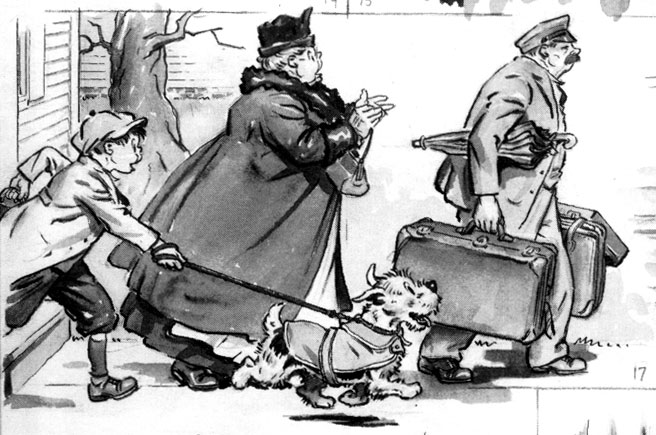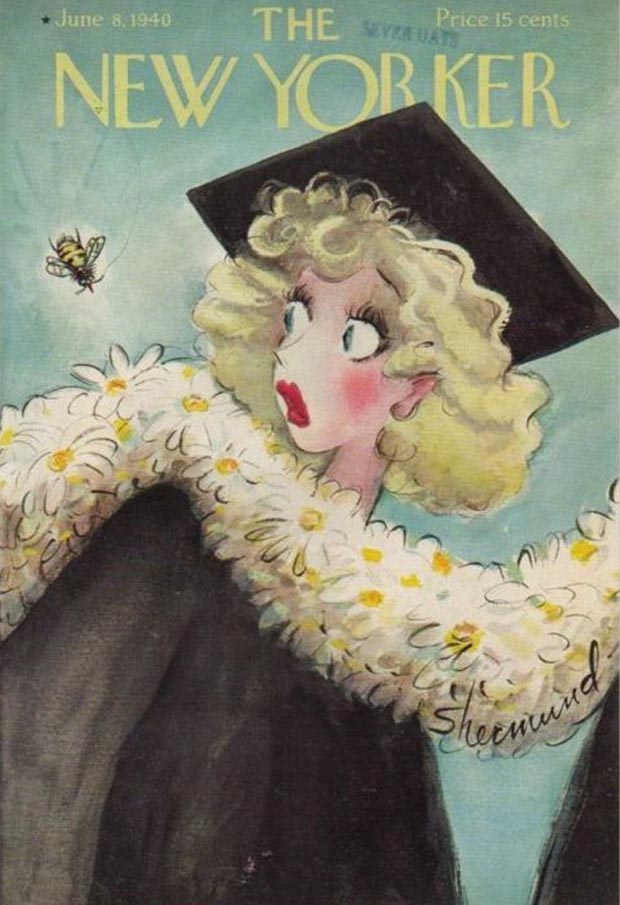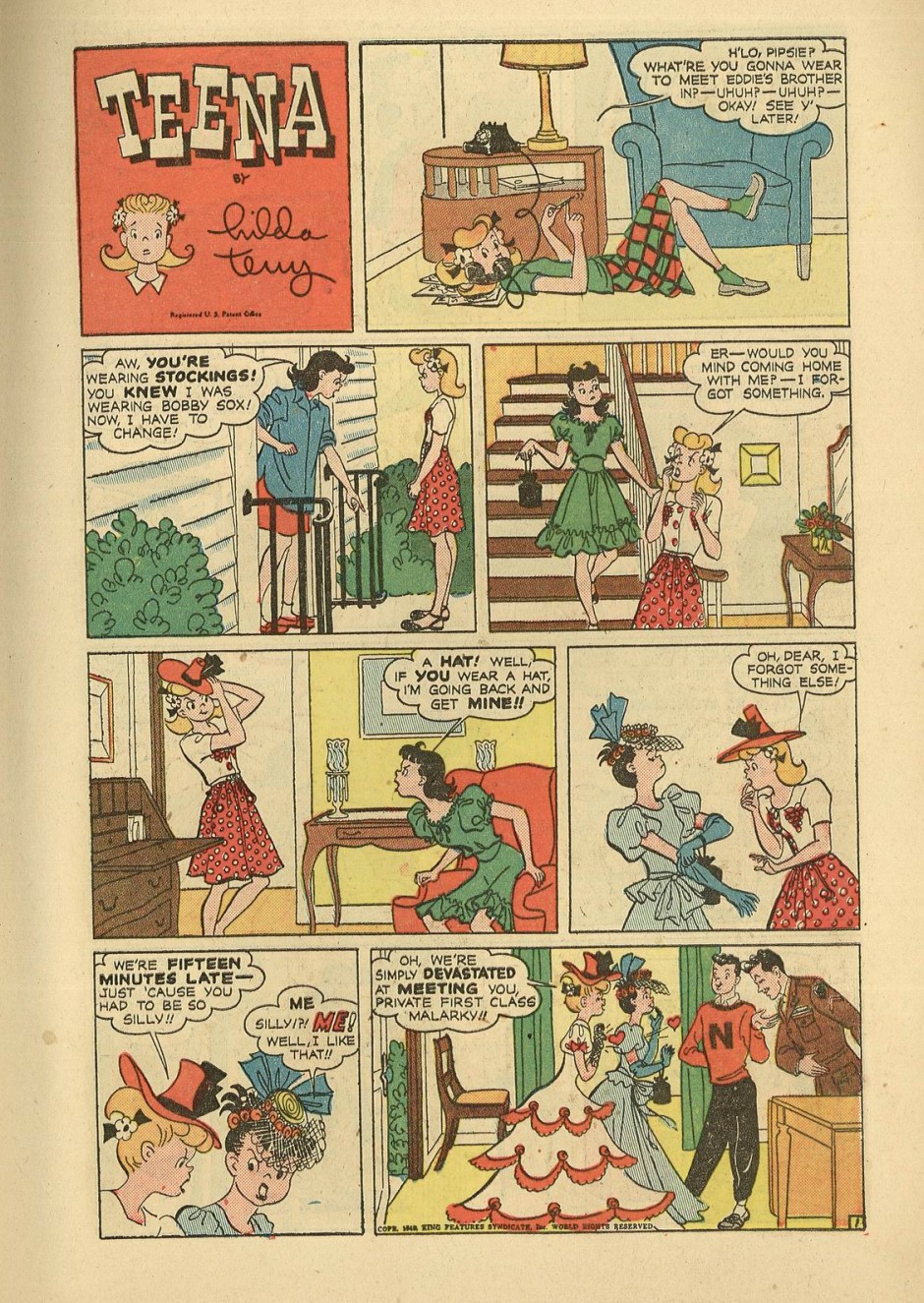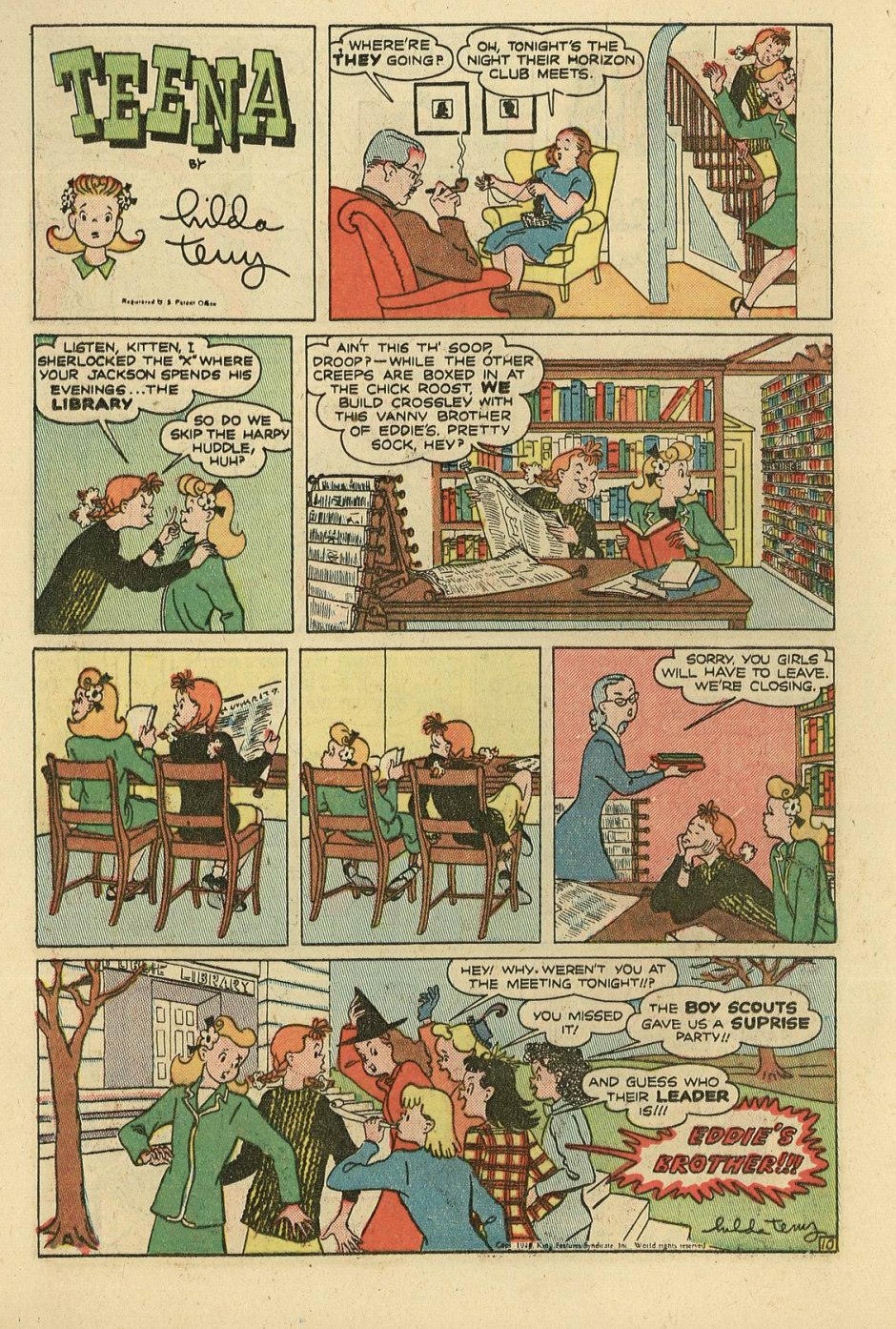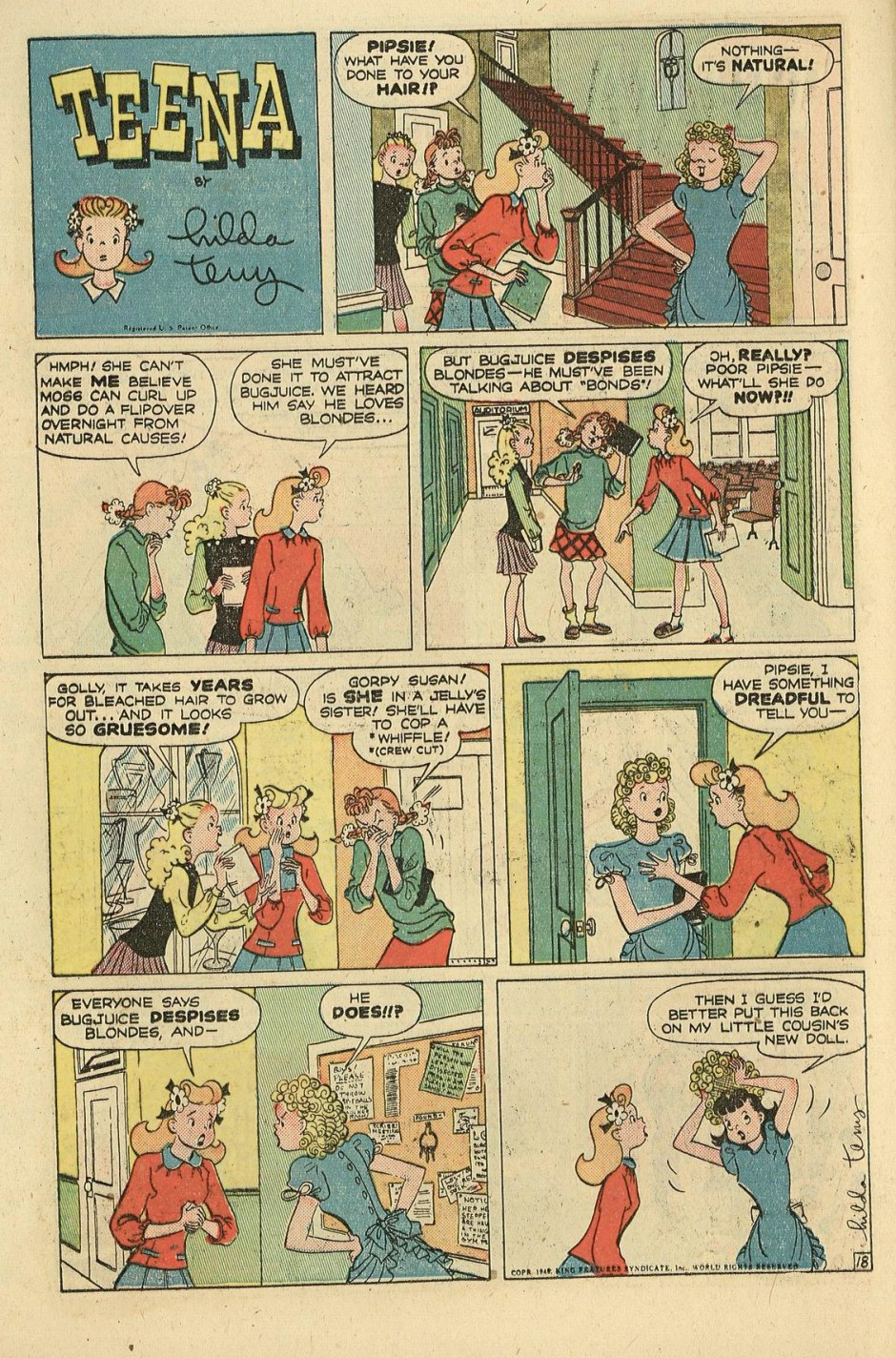Edwina Dumm, Barbara Shermund, and Hilda Terry helped pave the way for women in the cartooning business today. These women produced persuasive illustrations for the suffrage movement and emphasized the strength of women in daily life, often with notable humor, and their work increased acceptance of female cartoonists in the industry. Arguably one of the most important recognitions of their talent was the induction of these three women into the National Cartoonists Society, marking the first time the organization had ever accepted women into its ranks.
Edwina Dumm was born in Ohio in the early 1900s. She began cartooning at an early age. In 1915, Dumm started contributing editorial pieces and political cartoons to The Columbus Daily Monitor. Dumm was known as a voice for suffragists. Illustrating cartoons about previous wars and politics, Dumm wanted to relate previous political decisions to the current movement for women’s rights.
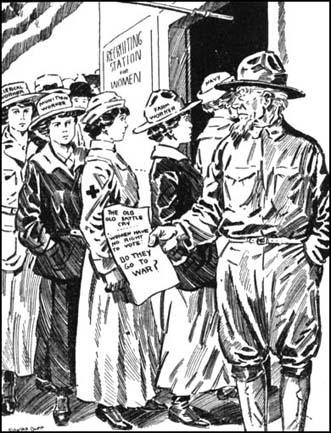
In this cartoon, Dumm advocates for the involvement of women in combat during World War I. (Source: Humor in America)
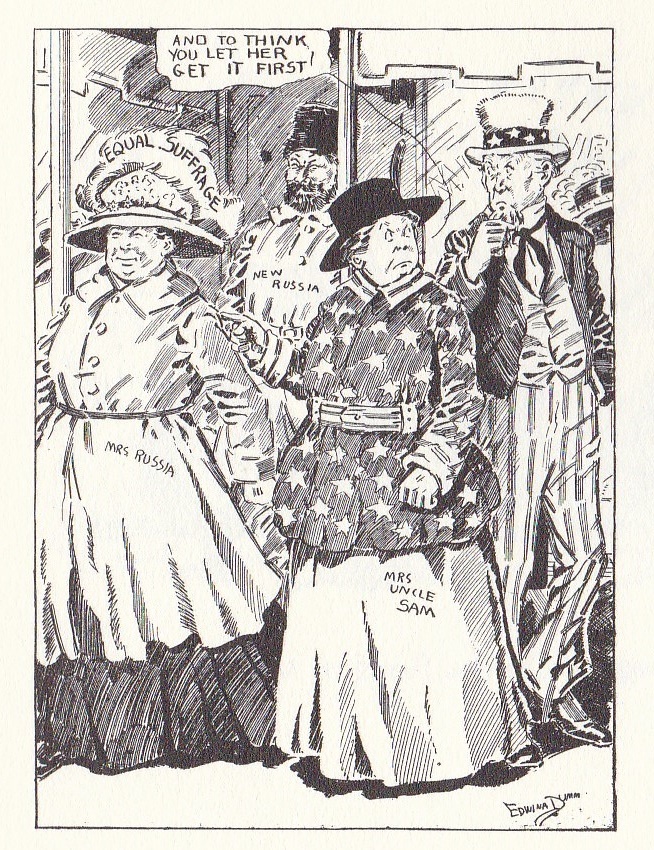
In this cartoon, Dumm criticizes the fact that Russian women had the right to vote before American women did. (Source: Humor in America)
Dumm was considered a success in her hometown — surprising for a time that wasn’t supportive of female cartoonists, especially those who produced political cartoons — but she longed for a life in New York City. Many were moving to the city to become cartoonists on a larger scale. Quick to find work upon moving because of the good reputation she had built at The Columbus Daily Monitor, Dumm was hired by George Matthew Adams, who ran one of the biggest cartoon syndicates. Even with a great reputation, Dumm was not given the primetime spot — the coveted Sunday strip.
In 1918, Dumm created Cap Stubbs and Tippie for the syndicate, and it would become her most well-known cartoon. This cartoon featured a young boy, Cap, and his dog, Tippie. Dumm was eventually given the Sunday spot in 1934, after years of success with her daily. The name of the cartoon was later shortened to Tippie because of the high interest in Dumm’s canine character, which she continued to draw until her retirement in 1966.
Shortly after Dumm began contributing to cartooning, Barbara Shermund came onto the scene. She began illustrating for The New Yorker in 1925, where she contributed eight covers and hundreds of cartoons. Often described as a gag cartoonist, Shermund’s illustrations nevertheless illuminated the sexist views that both men and women portrayed in society. Cartoons depicting men were primarily about infidelity and everyday sexism towards women, while cartoons featuring women didn’t mock women but instead commented on the constraints of fashion, the roles women are expected to have in society, and the increasing independence that women were experiencing in the era.

“Well, I guess women are just human beings after all.” (Source: International Museum of Cartoon Art Collection, The Ohio State University Billy Ireland Cartoon Library & Museum)
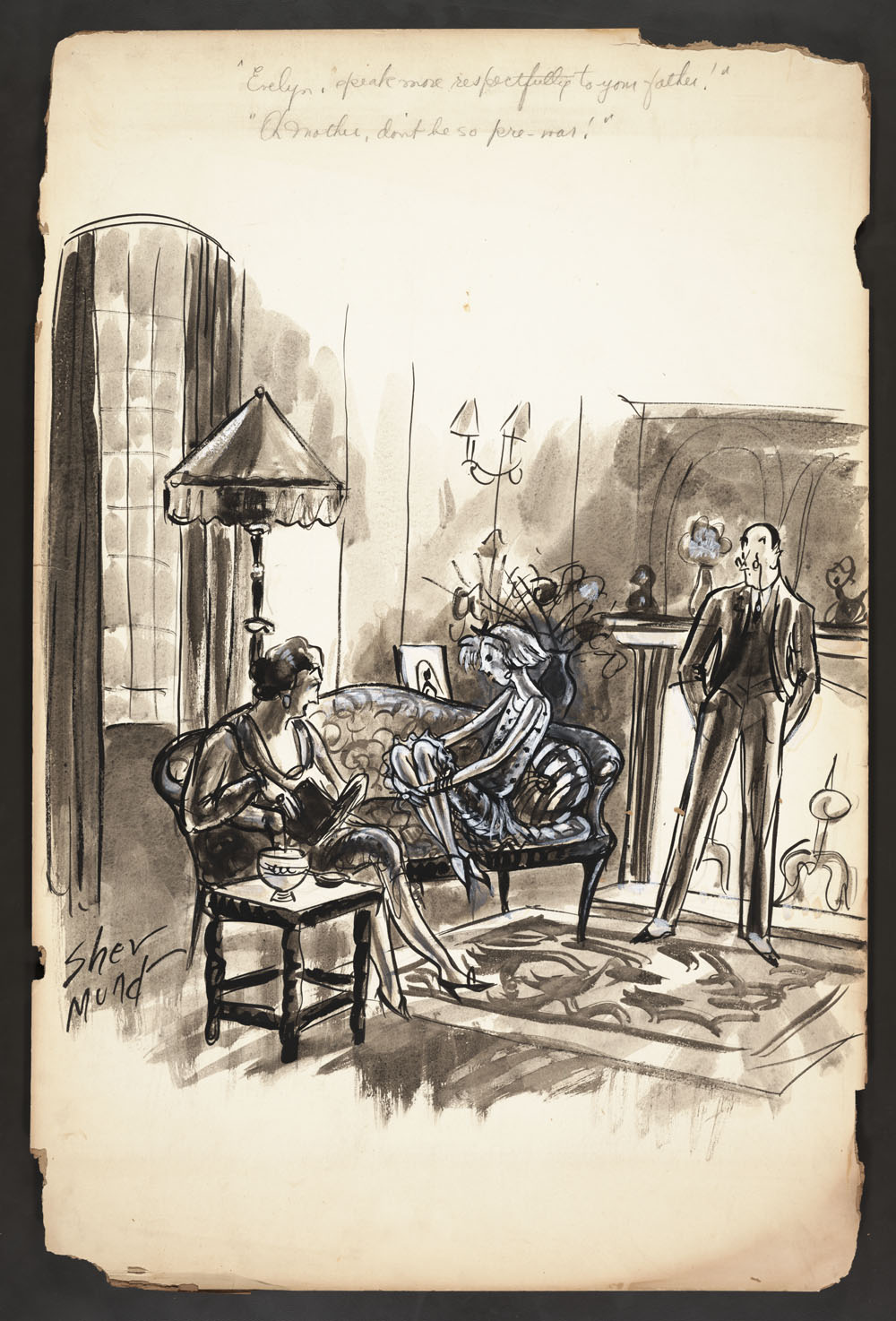
“Evelyn, speak more respecftfully to your father!” “Oh mother, don’t be so pre-war!” (Source: International Museum of Cartoon Art Collection, The Ohio State University Billy Ireland Cartoon Library & Museum)
While Shermund was still with The New Yorker, she began working for other publications and distributors, such as Esquire and King Feature Syndicate. During this period of time, Shermund’s work began to take on a mocking tone toward women as she pandered to the audience of Esquire and began hiring someone else (usually men) to write her gags. Likely for this reason, much of Shermund’s work and her contributions to cartooning have been largely overlooked. However, while her work for Esquire might not have been as original or as egalitarian as her earlier work, this should not take away from the powerful feminist visual rhetoric that Shermund provided in the many years she contributed to the industry.

“He’s the gentleman who came up to complain about the noise!” One of Shermund’s cartoons for Esquire.
Hilda Terry began cartooning in the early 1940s. Starting at The Saturday Evening Post, among other magazines, her work was noticed by William Randolph Hearst. Hearst, impressed by her work, hired Terry. During this time, Terry created her first work, It’s a Girl’s Life, which was later renamed Teena. At the time, Teena was the only syndicated cartoon that catered to teen girls’ interests.
Terry’s husband, Gregory D’Alessio, nominated her to the National Cartoonists Society. At the time, the organization was exclusively male, and members hesitated to include women, presumably because “men wouldn’t be able to curse.” Terry didn’t hesitate to demand that the organization either rename itself or admit women. Her letter to NCS read:
Gentlemen:
While we are, individually, in complete sympathy with you wish to convene unhampered by the presence of women, and while we would, individually, like to continue, as far as we are concerned, the indulgence of your masculine whim, we find that the cost of your stag privilege is stagnation for us, professionally. Therefore, we appeal to you, in all fairness, to consider that:
WHEREAS there is no information in the title to denote that it is exclusively a men’s organisation, and
WHEREAS a professional organisation that excludes women in this day and age is unheard of and unthought of, and
WHEREAS the public is therefore left to assume, where they are interested in any cartoonist of the female sex, that said cartoonist must be excluded from your exhibitions for other reasons damaging to the cartoonists professional prestige,
We most humbly request that you either alter your title to the National Men Cartoonists Society, or confine your activites to social and private functions, or discontinue, in effect, whatever rule or practice you have which bars otherwise qualified women cartoonists to membership for purely sexual reasons.
Sincerely,
The Committee for Women Cartoonists
Hilda Terry, temporary chairwoman
Despite the push back, a few men such as Milton Caniff and Al Capp supported the cause Terry was fighting to win. The society agreed to induct Hilda Terry in 1950, along with Edwina Dumm and Barbara Shermund. Soon after these women were accepted into the society, Terry began recommending other female cartoonists. Terry would leave cartooning for the burgeoning field of scoreboard animation, eventually earning an animation award in 1979 from the same society that once sought to keep her out.
Learn more about Rogers and other women who changed free expression in comics in CBLDF Presents: She Changed Comics, a resource compiling more than 60 profiles of groundbreaking women creators and featuring interviews with some of the women who are changing the medium today. Get your copy here or read it on comiXology.
Mackenzie Merkler is currently a Senior Manager at a large comic company. She enjoys true crime podcasts, aliens, and yoga.

